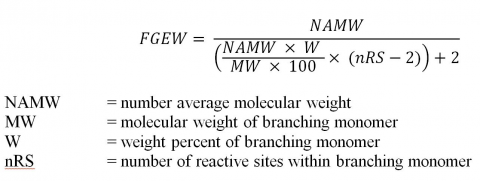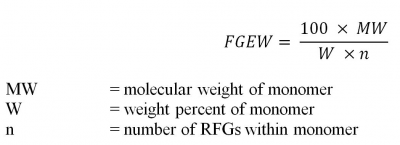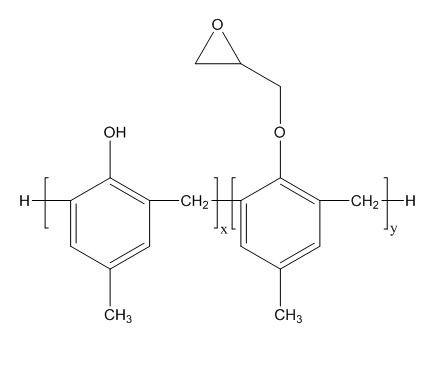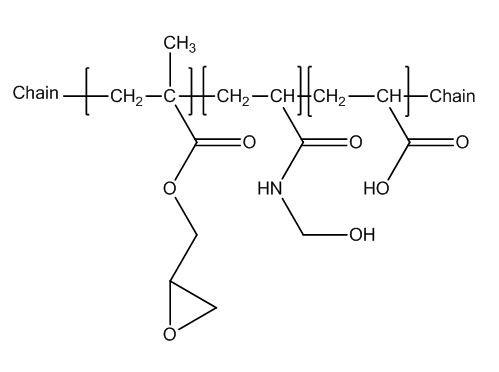Choose from 5 options:
Polymer of low concern (PLC) criteria
A 'polymer of low concern' (PLC) is a polymer that we consider to be of low concern to human health and the environment. Strict criteria apply
On this page
- Who needs to use this
- Is my polymer eligible to be introduced as a PLC?
- Other criteria that must be met
- Low molecular weight species requirements
- Reactive functional groups (RFG) requirements
- RFG categories – low, moderate and high concern
- Polyesters
- Other criteria
- How to calculate functional group equivalent weight (FGEW)
Who needs to use this
There are 2 situations when an importer or manufacturer (introducer) needs to work out if their chemical meets the PLC criteria:
- They are categorising their chemical introduction and need to know if their chemical is in the exempted category as a PLC.
- They are introducing a chemical on the Inventory that has a specific information requirement (SIR) to tell AICIS if their polymer does not meet the PLC criteria.
Also available - interactive PLC decision tools
As an alternative to reading this page, you can use our online tools to see if your introduction meets the PLC criteria. There are 2 decision tools to choose from:
Is my polymer eligible to be introduced as a PLC?
To be eligible to be introduced as a PLC, a polymer must:
have a number average molecular weight greater than or equal to 1,000 g/mol as well as meet the low molecular weight species and reactive functional group requirements
or
- be a polyester manufactured solely from prescribed reactants
Other criteria that must be met
To be eligible to be introduced as a PLC, a polymer must also meet the following criteria:
- have a low cationic density
- contain approved elements only
- not contain any difluoromethylene or trifluoromethyl groups
- be stable under the conditions in which it is used
- not be a high molecular weight (greater than or equal to10,000 g/mol) water absorbing polymer
- not have any known hazard classification
Low molecular weight species requirements
Except for polyesters manufactured solely from prescribed reactants, a PLC must meet the percentage of low molecular weight species requirements. This is dependent on the number average molecular weight (NAMW) of the polymer.
For polymers with an NAMW greater than or equal to 1,000 g/mol and < 10,000 g/mol, the allowable content of low molecular weight species is:
< 10% below 500 g/mol
and
- < 25% below 1,000 g/mol.
For polymers with an NAMW greater than or equal to 10,000 g/mol, the allowable content of low molecular weight species is:
< 2% below 500 g/mol
and
- < 5% below 1,000 g/mol.
Note: Residual monomers and reactants aren’t included when finding the content of low molecular weight species. The low molecular weight species in a polymer refers only to the oligomer content with NAMW less than 1,000 g/mol. We define oligomers as the low molecular weight species derived from the polymerisation reaction. This definition is consistent with the US EPA’s definition in its polymer exemption criteria.
Reactive functional groups (RFG) requirements
A RFG is defined as ‘an atom, or an associated group of atoms, in an industrial chemical that is intended, or may reasonably be expected, to undergo chemical reaction’.
For polymers with an NAMW greater than or equal to 10,000 g/mol, there is no restriction on RFGs.
For polymers with an NAMW greater than or equal to 1,000 g/mol and < 10,000 g/mol, a PLC must meet the following RFG requirement.
| Scenario | Outcome |
|---|---|
| The polymer includes moderate concern RFGs and doesn’t include high concern RFGs. | It must have a combined Functional Group Equivalent Weight (FGEW) of at least 1,000 g/mol, calculated based on all moderate concern RFGs present in the polymer. |
| The polymer includes high concern RFGs. | Regardless if moderate concern RFGs are present, it must have a combined FGEW of at least 5,000 g/mol, calculated based on all moderate and high concern reactive functional groups present in the polymer. |
RFG categories – low, moderate and high concern
RFGs are divided into 3 categories — low, moderate and high concern — to reflect the comparative reactivity of each functional group. The table below shows reactive functional groups and their level of concern.
Table of reactive functional group categories
| Reactive functional group | Concern category |
|---|---|
| Aliphatic hydroxyls | Low |
| Blocked isocyanates (including ketoxime-blocked isocyanates) | Low |
| Butenedioic acid groups | Low |
| Carboxylic acids | Low |
| Conjugated olefinic groups contained in naturally occurring fats, oils and carboxylic acids | Low |
| Halogens (except reactive halogen-containing groups such as benzylic or allylic halides) | Low |
| Imidazolidinone groups | Low |
| Imides | Low |
| Organic phosphate esters1 | Low |
| Thiols | Low |
| Unconjugated nitriles | Low |
| Unconjugated olefinic groups considered ‘ordinary’2 | Low |
| Acid anhydrides | Medium |
| Acid halides | Medium |
| Aldehydes | Medium |
| Alkoxysilanes (with alkoxy greater than C2-alkoxysilane) | Medium |
| Allyl ethers | Medium |
| Conjugated olefinic groups not contained in naturally occurring fats, oils and carboxylic acids | Medium |
| Cyanates | Medium |
| Epoxides | Medium |
| Hemiacetals | Medium |
| Imines (ketimines and aldimines) | Medium |
| Methylol-amides | Medium |
| Methylol-amines | Medium |
| Methylol-ureas | Medium |
| Unsubstituted positions ortho or para to phenolic hydroxyl | Medium |
| Alkoxysilanes (with alkoxy of C1-or C2- alkoxysilane) | High |
| Alpha lactones | High |
| Amines | High |
| Aziridines | High |
| Azo groups | High |
| Beta lactones | High |
| Carbodi-imides | High |
| Disulfides | High |
| Halosilanes | High |
| Hydrazines | High |
| Hydrosilanes | High |
| Isocyanates | High |
| Isothiocyanates | High |
| Pendant acrylates | High |
| Pendant methacrylates | High |
| Trithiocarbonates | High |
| Vinyl sulfones | High |
| Any other reactive functional group that is not a low or a moderate concern RFG | High |
1 – Must still meet the approved elements criterion to be eligible to be regulated as a PLC.
2 – Not specially activated either by being part of a larger functional group, such as a vinyl ether, or by other activation influences (for example, a strongly electron-withdrawing sulfone group with which the olefinic groups interact).
The category of the RFG is based on the presence of chemically or metabolically-reactive or toxic (including eco-toxic) functional groups within the polymer.
Low concern RFGs
RFGs in the low concern category generally:
lack reactivity in biological and/or aquatic media
or
- have low reactivity that does not have adverse effects.
There are no restrictions for low concern functional groups. These may be used without limit.
Moderate concern RFGs
RFGs in the moderate concern category have evidence of reactivity in biological and/or aquatic media but the effects are not severe enough to place the functional group in the high concern category.
High concern RFGs
RFGs in the high concern category are the most reactive and are known to pose health and/or environmental concerns.
If there is no, insufficient or contradictory information on a RFG it defaults to the high concern category. This category applies until sufficient information becomes available to move it to another category.
Functional groups not considered to be RFGs
A number of functional groups are implicitly not considered to be RFGs. These include:
- carboxylic esters
- ethers
- amides
- urethanes
- sulfones and
- nitro groups.
This is provisional on the functional group not being modified to enhance its reactivity (for example, the dinitrophenyl ester of a carboxylic acid).
Polyesters
A polyester is a polymer with molecules containing at least 2 carboxylic acid ester linkages, at least 1 of which links internal monomer units together.
Polyesters manufactured solely from prescribed reactants, including any reactants at less than 2%, are eligible to be introduced as PLCs. This provision is independent of the NAMW and low molecular weight species criterion. However, all other PLC criteria must be met. Thus, certain polyesters will not be eligible to be introduced as PLCs, including:
- biodegradable polyesters
- highly water-absorbing polyesters with NAMW greater than or equal to 10,000 g/mol.
A number of prescribed reactants are not on the Australian Inventory of Industrial Chemicals (the Inventory). Thus, before you manufacture polyesters from these reactants in Australia, you must first find out the introduction category for these reactants.
On the other hand, polyesters manufactured from these reactants overseas could be imported as the reactant itself would not be introduced.
Note: In addition, the methyl and ethyl ester as well as anhydride derivatives of a listed substance in the table are allowed. However no pendant anhydrides should remain in the final polyester polymer.
Table of prescribed reactants
| Reactants | CAS Number |
|---|---|
| Monobasic acids and natural oils | |
| Benzoic acid | 65-85-0 |
| Canola oil | 120962-03-0 |
| Castor oil | 8001-79-4 |
| Castor oil, dehydrated | 64147-40-6 |
| Castor oil, dehydrated, polymerised | 68038-02-8 |
| Coconut oil | 8001-31-8 |
| Coconut oil, hydrogenated | 84836-98-6 |
| Corn oil | 8001-30-7 |
| Cottonseed oil | 8001-29-4 |
| Dodecanoic acid | 143-07-7 |
| Fats and glyceridic oils, anchovy | 128952-11-4 |
| Fats and glyceridic oils, babassu | 91078-92-1 |
| Fats and glyceridic oils, herring | 68153-06-0 |
| Fats and glyceridic oils, menhaden | 8002-50-4 |
| Fats and glyceridic oils, sardine | 93334-41-9 |
| Fats and glyceridic oils, oiticica | 8016-35-1 |
| Fatty acids, C8-10 | 68937-75-7 |
| Fatty acids, C14-18 and C16-18-unsaturated | 67701-06-8 |
| Fatty acids, C16-18 and C18-unsaturated | 67701-08-0 |
| Fatty acids, castor-oil | 61789-44-4 |
| Fatty acids, coco | 61788-47-4 |
| Fatty acids, corn oil | 68308-50-9 |
| Fatty acids, dehydrated castor-oil | 61789-45-5 |
| Fatty acids, linseed oil | 68424-45-3 |
| Fatty acids, olive-oil | 92044-96-7 |
| Fatty acids, safflower oil | 93165-34-5 |
| Fatty acids, soya | 68308-53-2 |
| Fatty acids, sunflower oil | 84625-38-7 |
| Fatty acids, sunflower-oil, conjugated | 68953-27-5 |
| Fatty acids, tall-oil | 61790-12-3 |
| Fatty acids, tall-oil, conjugated | N/A |
| Fatty acids, vegetable oil | 61788-66-7 |
| Fish oil | 8016-13-5 |
| Glycerides, C16-18 and C18-unsaturated | 67701-30-8 |
| Heptanoic acid | 111-14-8 |
| Hexadecanoic acid | 57-10-3 |
| 9-Hexadecenoic acid, (9Z)- | 373-49-9 |
| Hexanoic acid | 142-62-1 |
| Hexanoic acid, 3,3,5-trimethyl- | 23373-12-8 |
| Hexanoic acid, 3,5,5-trimethyl- | 3302-10-1 |
| Linseed oil | 8001-26-1 |
| Linseed oil, oxidized | 68649-95-6 |
| Linseed oil, polymerized | 67746-08-1 |
| Nonanoic acid | 112-05-0 |
| Octadecanoic acid | 57-11-4 |
| 9-Octadecenoic acid (9Z) | 112-80-1 |
| 9,12-Octadecadienoic acid (9Z,12Z)- | 60-33-3 |
| Oils, cannabis | N/A |
| Oils, palm kernel | 8023-79-8 |
| Oils, perilla | 68132-21-8 |
| Oils, walnut | 8024-09-7 |
| Olive oil | 8001-25-0 |
| Safflower oil | 8001-23-8 |
| Soybean oil | 8001-22-7 |
| Sunflower oil | 8001-21-6 |
| Tung oil | 8001-20-5 |
| Di and tri basic acids | |
| 1,2-Benzenedicarboxylic acid | 88-99-3 |
| 1,3-Benzenedicarboxylic acid | 121-91-5 |
| 1,3-Benzenedicarboxylic acid, dimethyl ester | 1459-93-4 |
| 1,4-Benzenedicarboxylic acid | 100-21-0 |
| 1,4-Benzenedicarboxylic acid, diethyl ester | 636-09-9 |
| 1,4-Benzenedicarboxylic acid, dimethyl ester | 120-61-6 |
| 1,2,4-Benzenetricarboxylic acid | 528-44-9 |
| Butanedioic acid | 110-15-6 |
| Butanedioic acid, diethyl ester | 123-25-1 |
| Butanedioic acid, dimethyl ester | 106-65-0 |
| 2-Butenedioic acid (E)- | 110-17-8 |
| 1,4-Cyclohexanedicarboxylic acid | 1076-97-7 |
| Decanedioic acid | 111-20-6 |
| Decanedioic acid, diethyl ester | 110-40-7 |
| Decanedioic acid, dimethyl ester | 106-79-6 |
| Dodecanedioic acid | 693-23-2 |
| Fatty acids, C18-unsaturated, dimers | 61788-89-4 |
| 2,5-Furandione, dihydro- | 108-30-5 |
| Heptanedioic acid | 111-16-0 |
| Heptanedioic acid, dimethyl ester | 1732-08-7 |
| Hexanedioic acid | 124-04-9 |
| Hexanedioic acid, diethyl ester | 141-28-6 |
| Hexanedioic acid, dimethyl ester | 627-93-0 |
| 5-Isobenzofurancarboxylic acid, 1,3-dihydro-1,3-dioxo- | 552-30-7 |
| 1,3-Isobenzofurandione | 85-44-9 |
| Nonanedioic acid | 123-99-9 |
| Nonanedioic acid, diethyl ester | 624-17-9 |
| Nonanedioic acid, dimethyl ester | 1732-10-1 |
| Octanedioic acid | 505-48-6 |
| Octanedioic acid, dimethyl ester | 1732-09-8 |
| Pentanedioic acid | 110-94-1 |
| Pentanedioic acid, diethyl ester | 818-38-2 |
| Pentanedioic acid, dimethyl ester | 1119-40-0 |
| Undecanedioic acid | 1852-04-6 |
| Unsaturated fatty acids, C18, dimers, hydrogenated | 68783-41-5 |
| Polyols | |
| 1,3-Butanediol | 107-88-0 |
| 1,4-Butanediol | 110-63-4 |
| 1,4-Cyclohexanedimethanol | 105-08-8 |
| 1,2-Ethanediol | 107-21-1 |
| Ethanol, 2,2´-oxybis- | 111-46-6 |
| 1,6-Hexanediol | 629-11-8 |
| 1,3-Pentanediol, 2,2,4-trimethyl- | 144-19-4 |
| 1,2-Propanediol | 57-55-6 |
| 1,3-Propanediol | 504-63-2 |
| 1,3-Propanediol, 2,2-bis(hydroxymethyl)- | 115-77-5 |
| 1,3-Propanediol, 2,2-dimethyl- | 126-30-7 |
| 1,3-Propanediol, 2-ethyl-2-(hydroxymethyl)- | 77-99-6 |
| 1,3-Propanediol, 2-(hydroxymethyl)-2-methyl- | 77-85-0 |
| 1,3-Propanediol, 2-methyl- | 2163-42-0 |
| 1,2,3-Propanetriol | 56-81-5 |
| 1,2,3-Propanetriol, homopolymer | 25618-55-7 |
| 2-Propen-1-ol, polymer with ethenylbenzene | 25119-62-4 |
| Modifiers | |
| Acetic acid, 2,2´-oxybis- | 110-99-6 |
| 1-Butanol (other than 1‑butanol that is used to manufacture a polyester with maleic or fumaric acid) | 71-36-3 |
| Cyclohexanol | 108-93-0 |
| Cyclohexanol, 4,4´-(1-methylethylidene)-bis- | 80-04-6 |
| Ethanol | 64-17-5 |
| Ethanol, 2-(2-butoxyethoxy)- | 112-34-5 |
| 1-Hexanol | 111-27-3 |
| Methanol | 67-56-1 |
| Methanol, hydrolysis products with trichlorohexylsilane and trichlorophenylsilane | 72318-84-4 |
| 1-Phenanthrenemethanol, tetradecahydro-1,4a-dimethyl-7-(1-methylethyl)- | 13393-93-6 |
| Phenol, 4,4´-(1-methylethylidene)bis-, polymer with 2,2´-[(1-methylethylidene)bis(4,1-phenyleneoxymethylene)]bis[oxirane] | 25036-25-3 |
| 1-Propanol, 2-methyl- | 78-83-1 |
| Siloxanes and Silicones, dimethyl, diphenyl, polymers with phenyl silsesquioxanes, methoxy-terminated | 68440-65-3 |
| Siloxanes and Silicones, dimethyl, methoxy phenyl, polymers with phenyl silsesquioxanes, methoxy-terminated | 68957-04-0 |
| Siloxanes and Silicones, methyl phenyl, methoxy phenyl, polymers with phenyl silsesquioxanes, methoxy- and phenyl-terminated | 68957-06-2 |
| Silsesquioxanes, phenyl propyl | 68037-90-1 |
Other criteria
To be introduced as a PLC, a polymer must also meet the criteria for:
- low cationic density
- approved elements
- difluoromethylene or trifluoromethyl groups
- stability
- water absorption
- known hazard classification
Low cationic density
Cationic polymers and polymers likely to become cationic in a natural aquatic environment are not eligible to be introduced as PLCs. The main concern is their toxicity towards aquatic organisms such as fish and algae.
A polymer is a low cationic density polymer if it is:
- not a cationic polymer or is not likely to become a cationic polymer in a natural aquatic environment (4<pH<9)
- not soluble (< 0.1 mg/L) or dispersible in water and will only be used in solid phase (for example ion exchange beads), or
- cationic (or potentially cationic) and the combined (total) FGEW of cationic groups is at least 5,000 g/mol.
A cationic polymer is a polymer containing a net positively-charged atom/s or associated group/s of atoms covalently linked to its polymer molecule. Examples are the ammonium, phosphonium and sulfonium cations.
A potentially cationic polymer is a polymer containing groups likely to become cationic. Examples are all:
- amines (for example primary, secondary, tertiary and aromatic)
- isocyanates (which hydrolyse to form carbamic acids, then decarboxylate to form amines).
Example of low charge density
Consider a polyamide with a NAMW 7,000 g/mol manufactured from equimolar amounts of ethylenediamine and isophthalic acid. On average, the polymer will have 1 unreacted amino group at 1 end of the polymer chain and an unreacted carboxylic acid group at the other end. As the amino group is potentially cationic, it needs to be included in the calculation of the FGEW of cationic groups in this polymer. The FGEW for the amino group can be calculated by end-group analysis, that is 7,000/1 g/mol. Therefore, the polymer meets the criteria for low cationic density as the FGEW is above 5,000 g/mol. If the NAMW had been less than 5,000 g/mol, or if the polymer had 2 free amine groups, then the polymer would not be eligible to be introduced as a PLC.
Note: There is no high NAMW cut-off for cationic density. Thus, even if a polymer has a NAMW of greater than or equal to 10,000 g/mol it still needs to have a FGEW of cationic groups of 5,000 g/mol or above, or it will not meet the PLC criteria.
Approved elements
A PLC must contain, as an integral part of its composition, at least 2 of the atomic elements carbon, hydrogen, nitrogen, oxygen, silicon and sulfur.
Excluding impurities, a PLC must only contain the following:
- carbon, hydrogen, nitrogen, oxygen, silicon and sulfur
- sodium, magnesium, aluminium, potassium, calcium, chlorine, bromine and iodine as the monatomic counter-ions Na+, Mg2+, Al3+, K+, Ca2+, Cl-, Br- or I-
- fluorine, chlorine, bromine or iodine covalently bound to carbon
- less than 0.2% (by weight) of any combination of the atomic elements (boron, copper, iron, lithium, manganese, nickel, phosphorus, tin, titanium, zinc and zirconium).
No other elements are allowed, except as impurities. Specifically, the fluoride anion (F-) is not allowed as it has a high acute toxicity.
This requirement refers to monatomic species only. For example, a polymer containing the ammonium counter ion (NH4+) may be a PLC provided it meets the other PLC criteria.
With the binding of halogens to carbon, note that we wouldn’t allow the perchlorate anion ClO4- because the chlorine is not covalently bound to carbon, but we would allow the trichloroacetate anion CCl3CO2-.
Difluoromethylene or trifluoromethyl groups
A polymer is not eligible to be a PLC if it contains any difluoromethylene (CF2) or trifluoromethyl (CF3) groups.
The primary concern for such fluorinated polymers is degradation in the environment to release potentially persistent, bioaccumulative or toxic degradation products.
Stability
A PLC must be a stable polymer.
A polymer is not eligible to be introduced as a PLC if it substantially degrades, decomposes or depolymerises during use. That is, the polymer is considerably, meaningfully or to a significantly large extent changed into simpler, smaller weight chemicals as the result of, but not limited to:
- oxidation
- hydrolysis
- heat
- sunlight
- attack by solvents or
- microbial action.
Examples of polymers that would not meet this criterion include those that are:
- designed to be pyrolysed or burnt
- designed or likely to substantially photodegrade
- explosive
- designed or likely to substantially biodegrade (for example, starch)
- hydrolytically unstable (t1/2 < 12 hours).
Note: A polymer may still be eligible as a PLC despite its potential to substantially degrade in the environment if the polymer is protected from degradation by being encapsulated during use. For example, polymers used in coatings, cements, adhesives, hot melts, and extrusion molding would be eligible as a PLC. In those situations, the polymer would be expected to be protected from environmental degradation.
Water absorption
Polymers with NAMW greater than or equal to 10,000 g/mol that are water absorbing (meaning a polymer capable of absorbing its own weight in water) do not qualify to be introduced as PLCs. A water absorbing polymer is capable of absorbing its own weight in water.
This criterion is for water absorbing polymers in particulate form only. It’s directed towards polymers known as 'super absorbents', such as those used in disposable nappies and paper towels.
We’ve based our concerns for water absorbing polymers on a 2-year inhalation study in rats using a high molecular weight water-absorbing polyacrylate polymer. The study data included observations of cancer in the rats.
We don’t consider water-soluble and water dispersible polymers to be water absorbing. This is because we assume that the normal clearance mechanisms of lungs after inhalation adequately clears particles of these polymers.
Known hazard classification
A polymer can only be a PLC if it does not have any 'known hazard classification'. We’ve prepared guidance on hazardous industrial chemicals.
How to calculate functional group equivalent weight (FGEW)
The FGEW is used to determine if the RFGs in a polymer are substantially diluted by polymeric material to allow the polymer to be introduced as a PLC.
The FGEW of a polymer is the ratio of the NAMW to the number of functional groups in the polymer. It’s the weight of a polymer that contains 1 formula weight of the functional group.
We don’t restrict the level of low concern RFGs in the polymer. We permit low concentrations of moderate and high concern RFGs in polymer molecules, but the reactivity of the functional group/s in question restricts the quantity.
Unless the FGEW can be determined empirically by recognised, scientific methodology (typically titration), a worst-case estimate must be made for the FGEW.
All moderate and high concern functional groups must be taken into account when calculating FGEW.
End-group analysis or percent charged method
The FGEW may be calculated by end-group analysis or by the percent charged method.
End-group analysis applies to polymers containing reactive functional groups at terminal positions.
The percent charged method applies to polymers with reactive functional groups distributed throughout the polymer.
End group analysis – linear and branched polymers
FGEW example equations 1 (linear) and 2 (branched)
Linear polymers
For linear polymers containing RFGs only at the terminal positions, the FGEW can be calculated using equation 1.
Equation 1 – linear polymers
For linear polymers, such as some condensation polymers (for example, polyesters and polyamides), the only RFGs are at the end of the chain because the others are used up in the condensation reaction. The number of end groups (n) may be equal to 1 or 2 depending on the molar ratio of the starting monomers.
For example, for a polyamide with a NAMW 1,500 g/mol made from an excess of ethylenediamine and adipic acid, an amine group (high concern) would be expected at each end of the polymer chain. Therefore, the amine FGEW = 1,500/2 = 750 g/mol.
On the other hand, if the polyamide was made from equimolar amounts of ethylenediamine and adipic acid, the polymer will on average have 1 unreacted amine group at 1 end of the polymer chain and an unreacted carboxylic acid group at the other end. In this case, the amine FGEW = 1,500/1 = 1,500 g/mol (the carboxylic acid group is not considered in the calculation, as it is a low concern RFG).
In both examples, the polymer would not be eligible to be introduced as a PLC as the amine FGEW is below the required minimum equivalent weight threshold of 5,000 g/mol for polymers containing high concern (potentially cationic) groups.
Branched polymers
For simple branched polymers (having only 1 monomer possessing more than 2 reactive sites), the FGEW is calculated from an estimated degree of branching. This is derived by knowing the number of reactive groups in the polyfunctional monomer. It’s assumed that the monomer responsible for the branching will be incorporated in its entirety to form the polymer. The FGEW can be calculated using equation 2.
Equation 2 – branched polymers
Consider a branched polyurethane polymer containing isocyanate groups (high concern) at chain ends derived from the polymerisation of pentaerythritol (molecular weight (MW) 136 g/mol) with polypropylene glycol and an excess of isophorone diisocyanate. The polyfunctional branching monomer pentaerythritol (4 reactive sites) is added to the reaction at 10 weight %. The NAMW of the polymer is 2,720 g/mol.
In the above example, the polymer would not be eligible to be introduced as a PLC as the isocyanate FGEW is below the required minimum equivalent weight threshold of 5000 g/mol for polymers containing high concern groups.
Percent charged method
Some condensation and addition reactions create polymers where not all RFGs along the backbone of the polymer are consumed during the reaction, so an accurate FGEW cannot be determined through a simple end-group analysis. For any of these polymers, FGEW can be calculated according to equation 3.
Equation 3 – percent charged method
For example, for an acrylic polymer containing 7.5 weight % acryloyl chloride monomer (MW 90.5 g/mol), the FGEW of acid chloride groups in the polymer is:
Combined FGEW calculation for multiple RFGs in a polymer
If the various RFGs in a polymer arise from multiple monomers, the FGEW must be calculated for each monomer separately, and then the combined FGEW is calculated according to equation 4.
Equation 4 – combined FGEW calculation for multiple RFGs in a polymer
FGEW calculation examples
Example 1
Consider the reaction between ethylenediamine (MW 60 g/mol) (charged at 30 weight %) and diglycidyl ether (MW 130 g/mol) (charged at 70 weight %) to give a polymer of NAMW of 5,000 g/mol. The epoxides in the backbone are reacted to give an aliphatic alcohol (low concern). The amine groups remain intact, with their FGEW proportional to the charged amount of ethylenediamine. As the diglycidyl ether is in excess, it can be assumed that the polymer is epoxide-terminated at both ends.
Using equation 3, the FGEW for the amine group (high concern) is (100 x 60)/(30 x 2) = 100 g/mol. The FGEW for the epoxide group (moderate concern) can be calculated using end group analysis (equation 1), that is, 5,000/2 = 2,500 g/mol.
Then, using equation 4, FGEWcomb = inverse of [1/100 + 1/2500] = 96 g/mol.
In this example, the polymer would not be eligible as a PLC.
Example 2
Consider a p-cresol-formaldehyde condensation polymer which is reacted with 1.5 weight % epichlorohydrin to give an epoxide-capped resin. As a worst-case scenario, it is assumed that the polymer is phenol-terminated. This would mean phenol groups with reactive ortho positions reside at the polymer backbone termini. The polymer also contains epoxy rings from the epichlorohydrin (MW 92.5 g/mol). Both reactive functional groups are moderate concern. A NAMW of 8,000 g/mol is assumed.
Using equation 3, the FGEW for the epoxide group is (100 × 92.5)/(1.5 × 1) = 6,167 g/mol. The FGEW for the phenol group can be calculated using end group analysis (equation 1), that is, 8,000/2 = 4,000 g/mol.
Then, using equation 4, FGEWcomb = inverse of [1/6,167 + 1/4,000] = 2,426.
With a combined FGEW of 2,426 g/mol, this polymer would be eligible to be introduced as a PLC because the FGEWcomb is above the required minimum equivalent weight threshold of 1,000 g/mol for a polymer containing moderate concern functional groups.
Example 3
Consider the addition reaction involving the polymerisation of three acrylates, glycidyl methacrylate (10 weight %, MW 142 g/mol, 1 RFG), hydroxymethyl acrylamide (2 weight %, MW 101 g/mol, 1 RFG) and acrylic acid (88 weight %).
In this case, it can be assumed that each monomer is completely incorporated into the polymer, with the RFGs of concern being the epoxide group (moderate concern) from glycidyl methacrylate and the hydroxymethyl amide group (moderate concern) from the acrylamide. The carboxylic acid moiety from acrylic acid is of low concern and need not be included in FGEW calculations.
Using equation 3, the FGEW for the epoxide group is (100 × 142)/(10 × 1) = 1,420 g/mol. Again using equation 3, the FGEW for the hydroxymethyl amide group is (100 × 101)/(2 × 1) = 5,050 g/mol.
Then, using equation 4, FGEWcomb = inverse of [1/1,420 + 1/5,050] = 1,108 g/mol.
With a combined FGEW of 1,108 g/mol, this polymer would be eligible to be introduced as a PLC because the FGEWcomb is above the required minimum equivalent weight threshold of 1,000 g/mol for a polymer containing moderate concern functional groups.
Last updated














